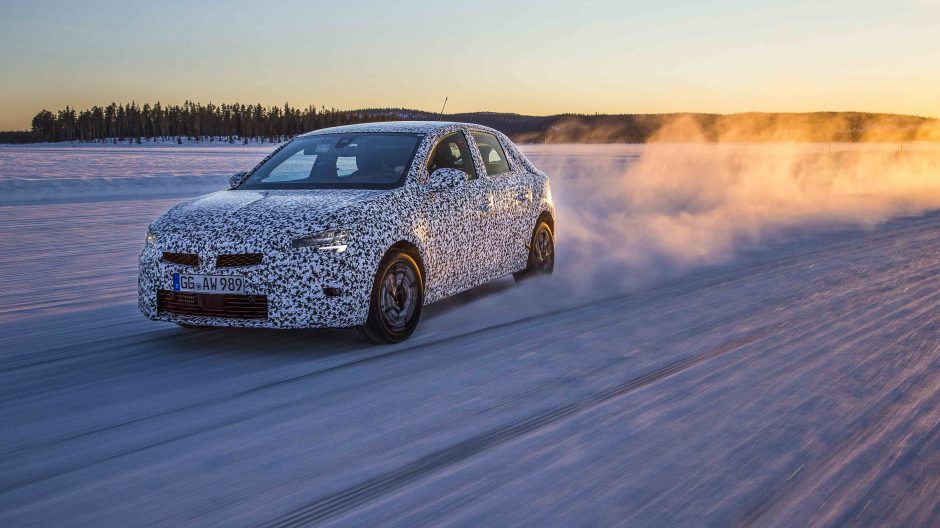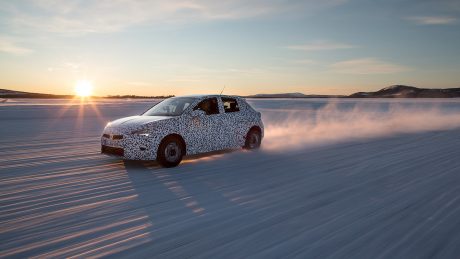- Wer gleitet so schnell über Eis und Schnee? Es ist ein Erlkönig der nächsten Corsa-Generation, der zu Testzwecken rund um Arjeplog unterwegs war.
“I still enjoy my work.”
Hunting over a frozen lake at over 100 km/h, then trying out on a demanding handling course what ASB, ESP and traction control can do on ice and snow in tight bends. All this in a brand new Opel that no one else has driven before – all this sounds like the kind of test drive every young engineer dreams of when he decides on a job in automotive development.
Since 1992, Gunnar Nees belongs to the elite circle for which such visions have been regularly fulfilled. After 27 years, even the greatest pleasure must have become routine long ago, right? “Not at all, I still do enjoy my work after nearly 30 years,” assures the 56-year-old. And that also applies to 30 degrees below zero.
VIDEO: The new Opel Corsa – Tested at Polar Circle
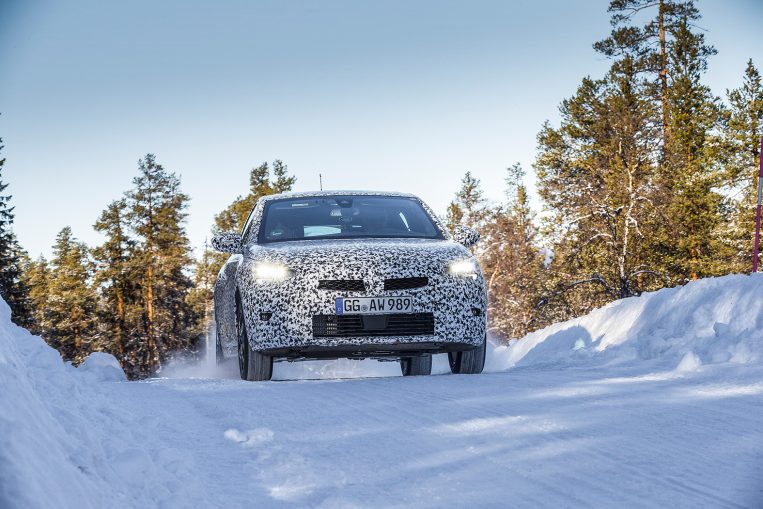
On top: The new Corsa during the test drives in Arjeplog, which statistically only has positive temperatures between April and October.
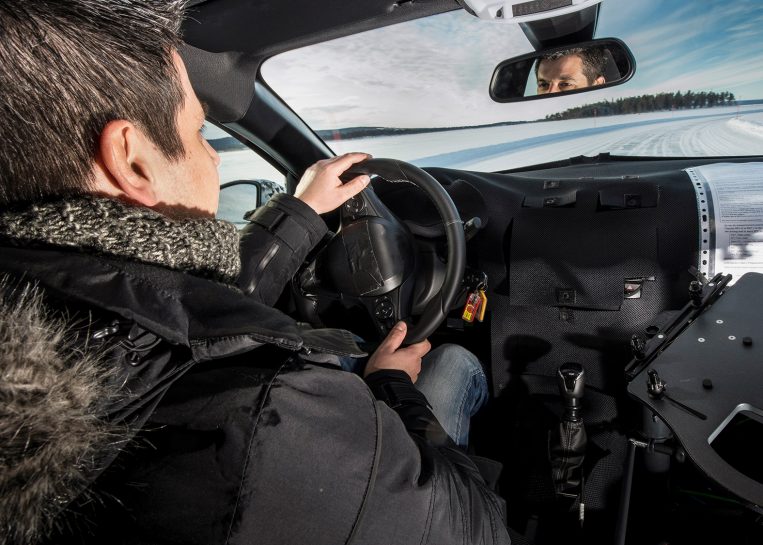
Steered in: Marvin Glombiowski, Opel test engineer in the Chassis Control Integration team, at the wheel of the Corsa prototype.
![]()
Numbers, please
20,000 reindeer, 2,500 moose and 25 bears and 3,400 people live in the Arjeplog district.
Welcome to Arjeplog, the “freezer compartment of Europe”, as the travel magazine “Merian” once called the place in the Swedish part of Lapland. The district on the edge of the Arctic Circle extends over 13,000 square kilometres, with a total of 8,727 lakes and waters on top, which are completely frozen in the cold season. 20,000 reindeer, 2,500 moose and 25 bears were last counted in the region. Additionally, 3,400 people live here.
Every winter, around 1,000 test drivers from 16 countries join in to test vehicle components on behalf of 50 companies. The focus is on the classics among driver assistance systems in particular: the anti-lock braking system (ABS), which ensures that a vehicle does not break out when braking on snow and ice, the traction control, which keeps a car on track even on rapidly changing surfaces, and the Electronic Stability Program (ESP), which prevents it from breaking out into bends as far as possible.
![]()
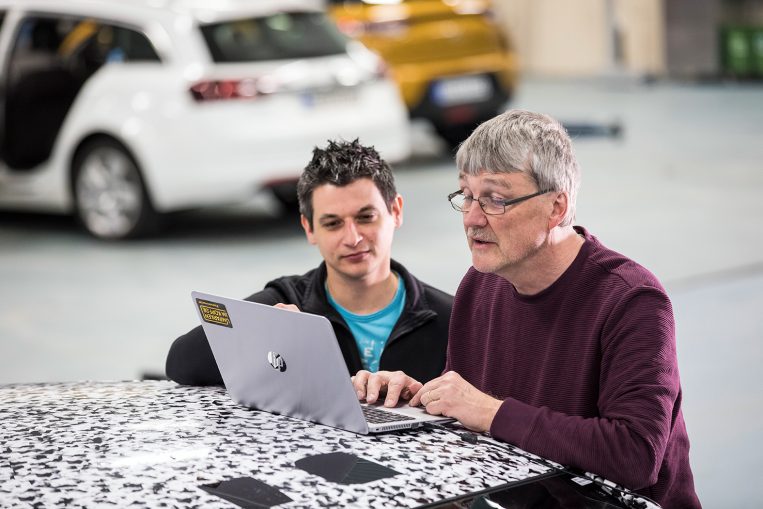
Analysis: Marvin Glombiowski and Gunnar Nees (from left) check the measured values of previous test drives.
![]()
The new Corsa
Compared to its predecessor, the new Corsa is up to 108 kilograms lighter – a saving of around ten percent on a comparably length of 4.06 meters.
The five-door will weigh only 980 kilograms without a driver. This weight reduction is an extraordinary development success, especially for a small car.
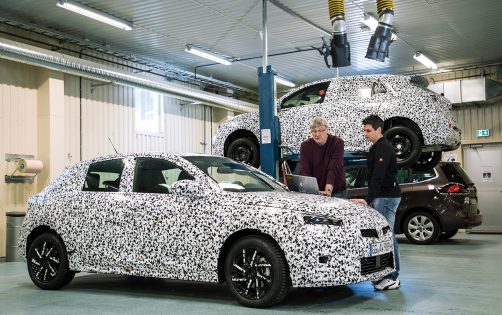
In the warm: While outside temperatures are often 30 degrees below freezing, Nees and Glombiowski (from left) continue their work in the heated garage.
While Lapland offers weather conditions, which occur rather rarely in Central and Southern European latitudes, the electronic assistance systems’ functionality can only be tested in the complete vehicle and under real circumstances. Intensively and over a longer period of time, this is only possible in geographical areas where permafrost is guaranteed. This is why Arjeplog has a firm place in the working year of Gunnar Nees and his colleagues from the Chassis Control Integration team.
New Corsa captivates by lightness
At the age of 18, Nees had passed his driving test. That was in 1981. One year later, the first Opel Corsa left the assembly line. A further 37 years later, in January and March 2019, Nees spent two weeks examining the ABS, ESP and traction control systems of the sixth Corsa generation, which will be launched next autumn.
The new model is particularly impressive because of its enormous lightness. Compared to its predecessor, the Corsa F has reduced its weight by up to 108 kilograms without changing its dimensions. The weight reduction was achieved, for example, by the use of new aluminium engines, an optimised seat structure and high-strength lightweight steels throughout the bodyshell.
![]()
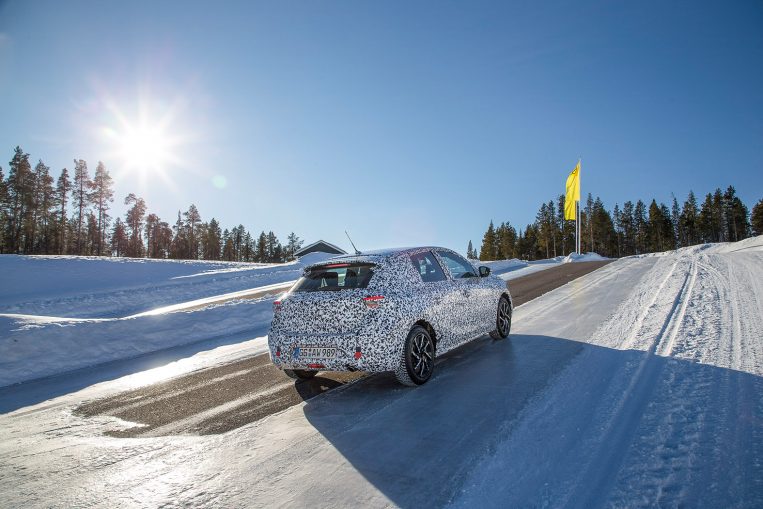
Ice and asphalt: Nees optimizes the traction control by starting tests on different surfaces.
![]()
“When it‘s dry and sunny in the freezing cold, the work is certainly more pleasant than at the same time in the wet, cold or cloudy Rüsselsheim.”
However, its reduced weight does not save the automobile athlete from the obligatory, conscientiously performed test drives on snow and ice. Gunnar Nees is primarily concerned with finding “the right balance between stability and speedy progress,” as he says: After all, the Opel DNA should always be a tangible experience.
At minus 40 degrees it goes into the hall
It goes without saying that the limits must also be tested during the test drives. “It‘ll knock you out of track,” admits Nees, “but not as often as many people think.” On the tracks of Arjeplog the consequences are not as dramatic as on the test tracks of the Nürburgring. “You dig yourself into a snow wall – and under certain circumstances you can‘t get out on your own.” Driving on snow and ice is an art in itself.
Shoes with thick soles are definitely recommended for working at temperatures far beyond freezing. And if the mercury drops to minus 40 degrees, the testers work in the heated hall. “When it‘s dry and sunny in the freezing cold, the work is certainly more pleasant than at the same time in the wet, cold or cloudy Rüsselsheim,” says Nees.
![]()
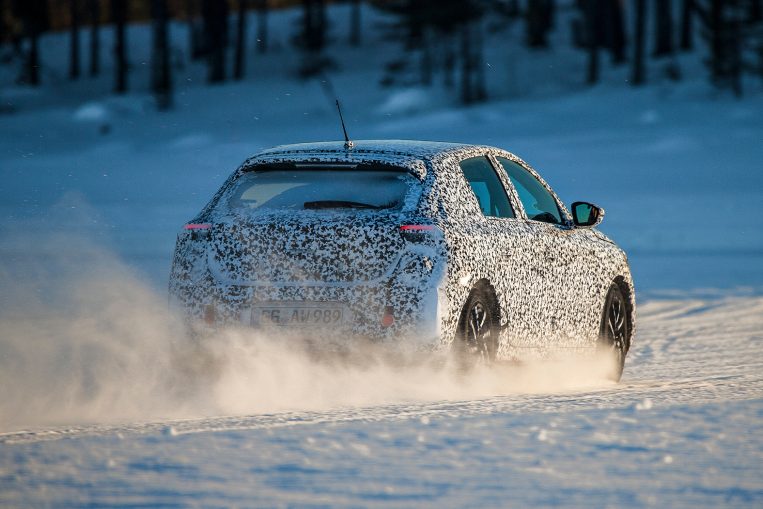
Whirled up snow: The camouflaged pre-series vehicle chases over the snow-covered test tracks of Arjeplog.
![]()
“It used to be worse when television, telephone and internet hadn‘t yet arrived up north.”
However: The testers don‘t really see the sun for long at the turn of the year: Dawn lasts until ten in the morning – and from 14 o‘clock it already gets dark again.
Does the icy solitude after work sometimes cause a camp frenzy? “Not at all”, says Nees and shakes his head. “It used to be worse when television, telephone and internet hadn‘t yet arrived up north.” But today you are well taken care of in the hotel. And if you want to do outdoor sports, you can, amongst others, use the floodlit cross-country trails.
Reindeer blood or fermented fish?
Meanwhile, the local restaurants offer salmon and other fresh fish – and reindeer meat. “But that‘s not everyone‘s taste,” says Nees, adding that even the colleagues from southern Sweden kept their hands off some of the local specialities. “For example, soup made from reindeer blood or fermented fish, the packaging of which is only opened under water due to the extreme development of odours.”
However, the testers in the far north do not have much free time to feast on and do sports. They work six days a week, only resting on Sundays. “But when you have a day off, you don‘t necessarily feel like getting back in your car and exploring the sights of the area.” Although these are quite attractive: spectacular, because frozen waterfalls are about two hours by car from Arjeplog.
But the work is the first. After all, the components of the next Corsa generation should be perfectly matched to each other. And perfectly matched products always taste best anyway – and above all when they come fresh from the “freezer compartment of Europe”.
![]()
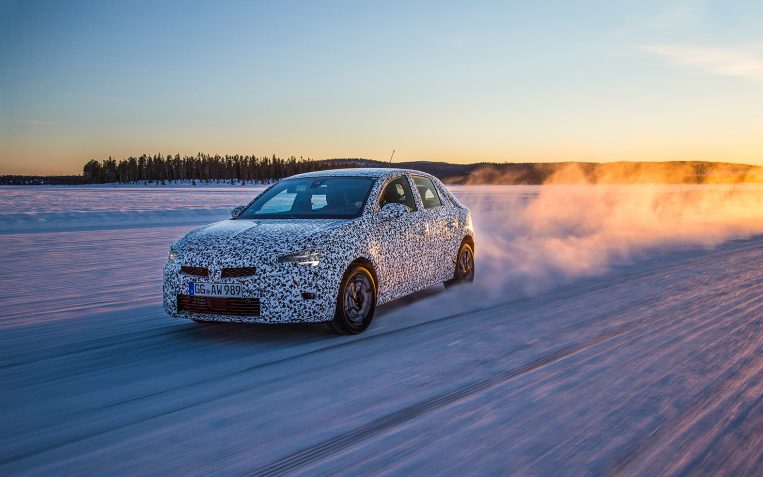
Meticulous work: When drifting, Gunnar Nees seeks “the right balance between stability and rapid progress”.
April 2019
